Avifauna – Namib to Zambezi 2025 (Nov)
Avifauna Namib to Zambezi in November 2025, the guided birding tour with natural history specialities.
Namib, Etosha, Okavango, Chobe, Zambezi to Victoria Falls

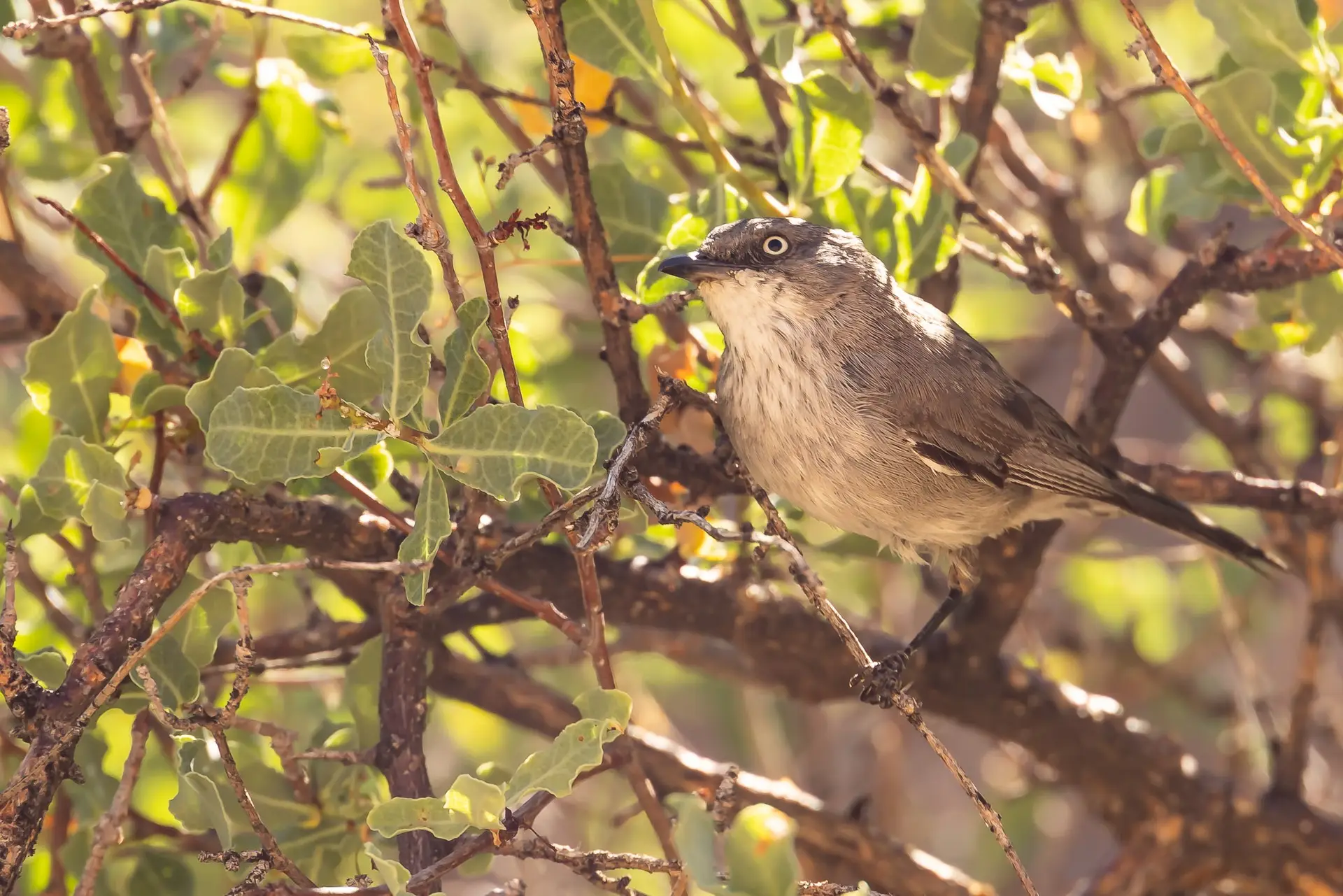
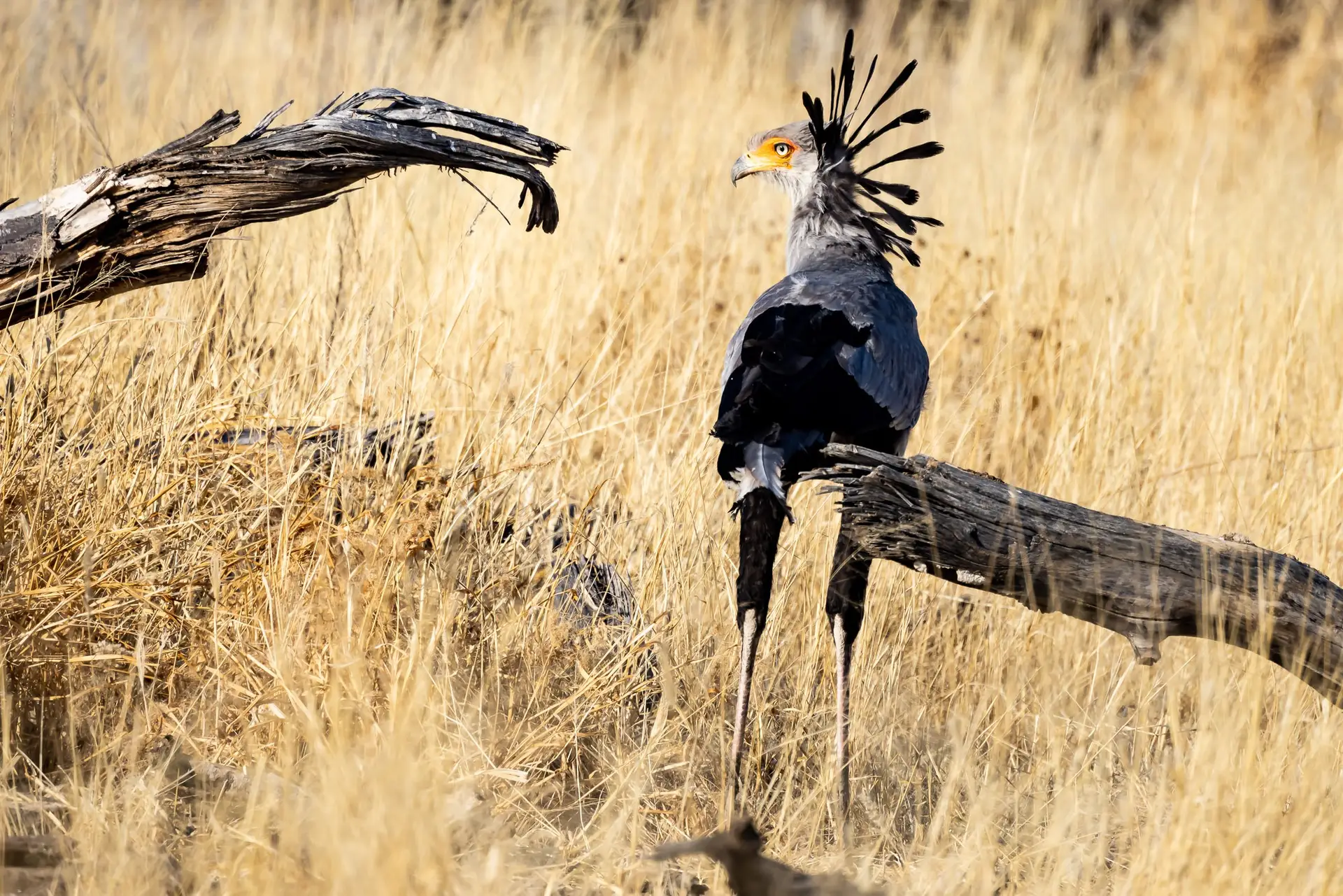

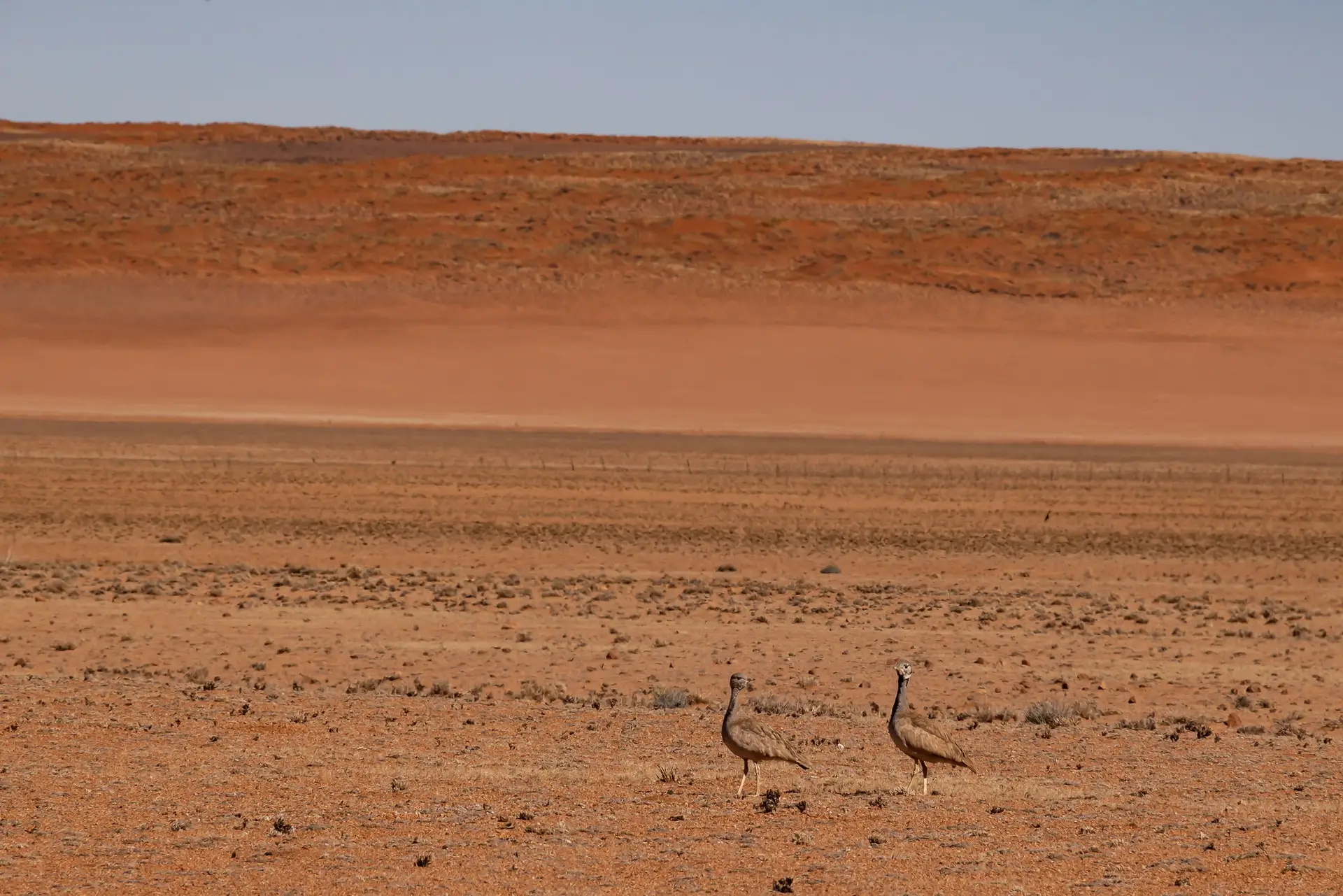

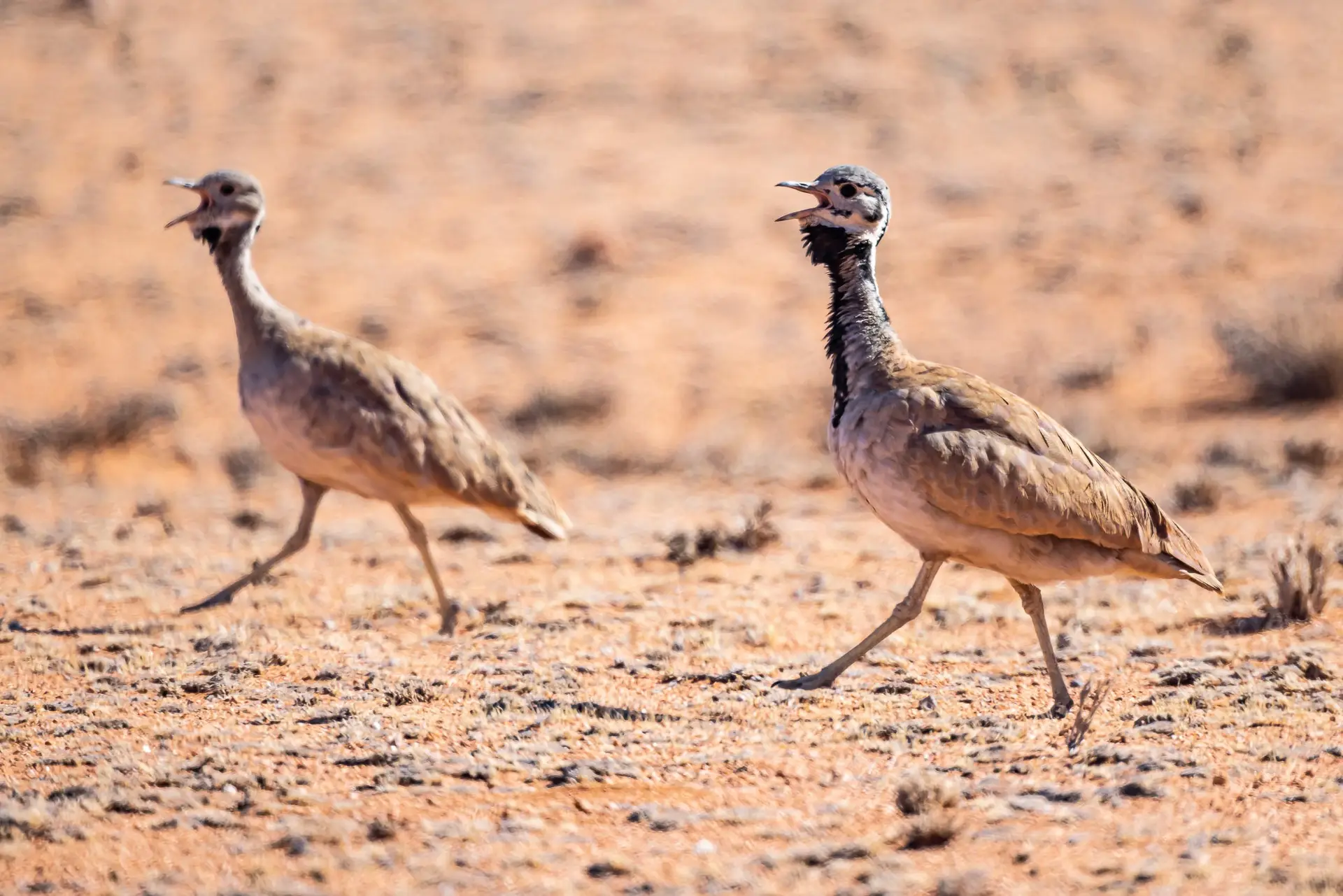
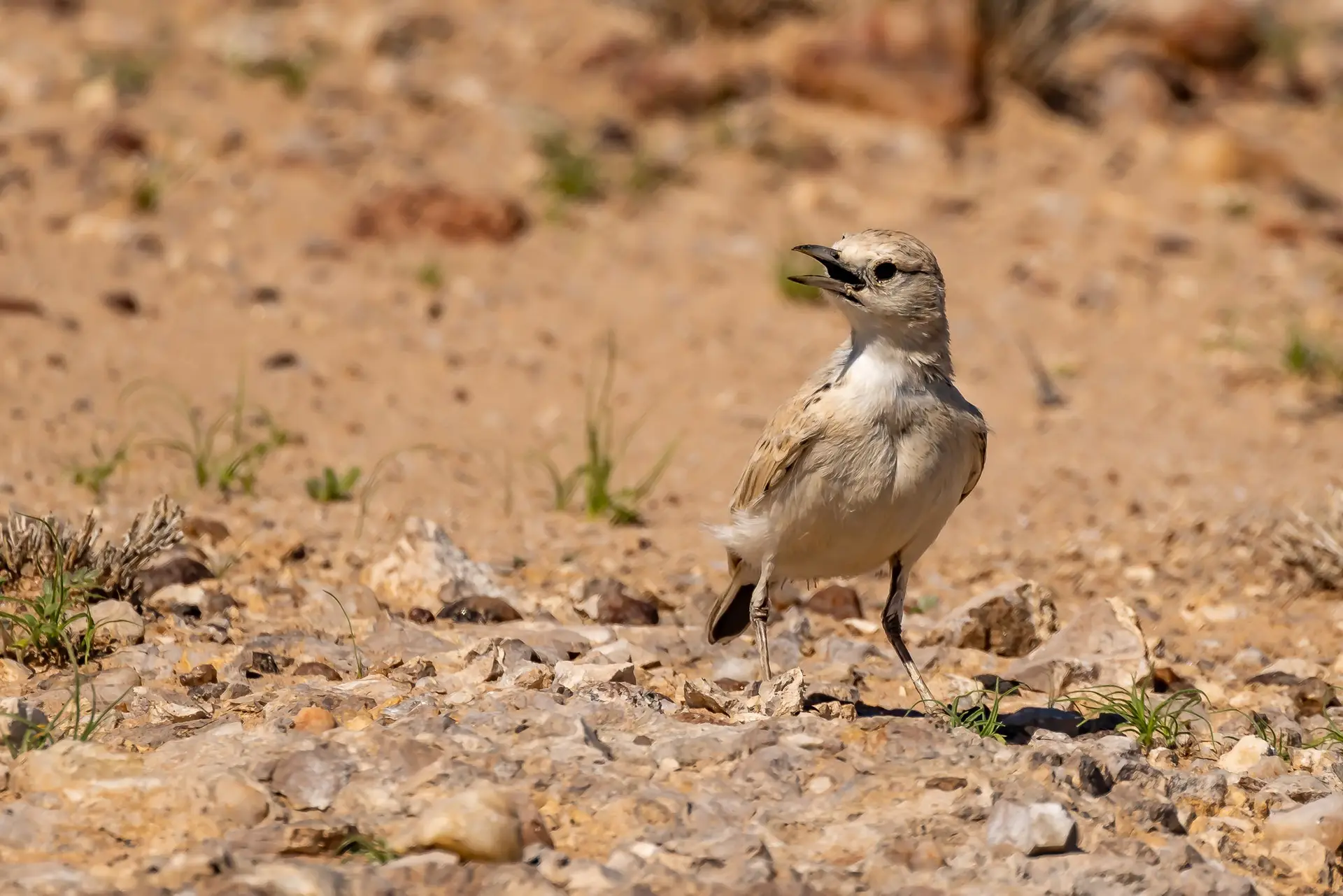



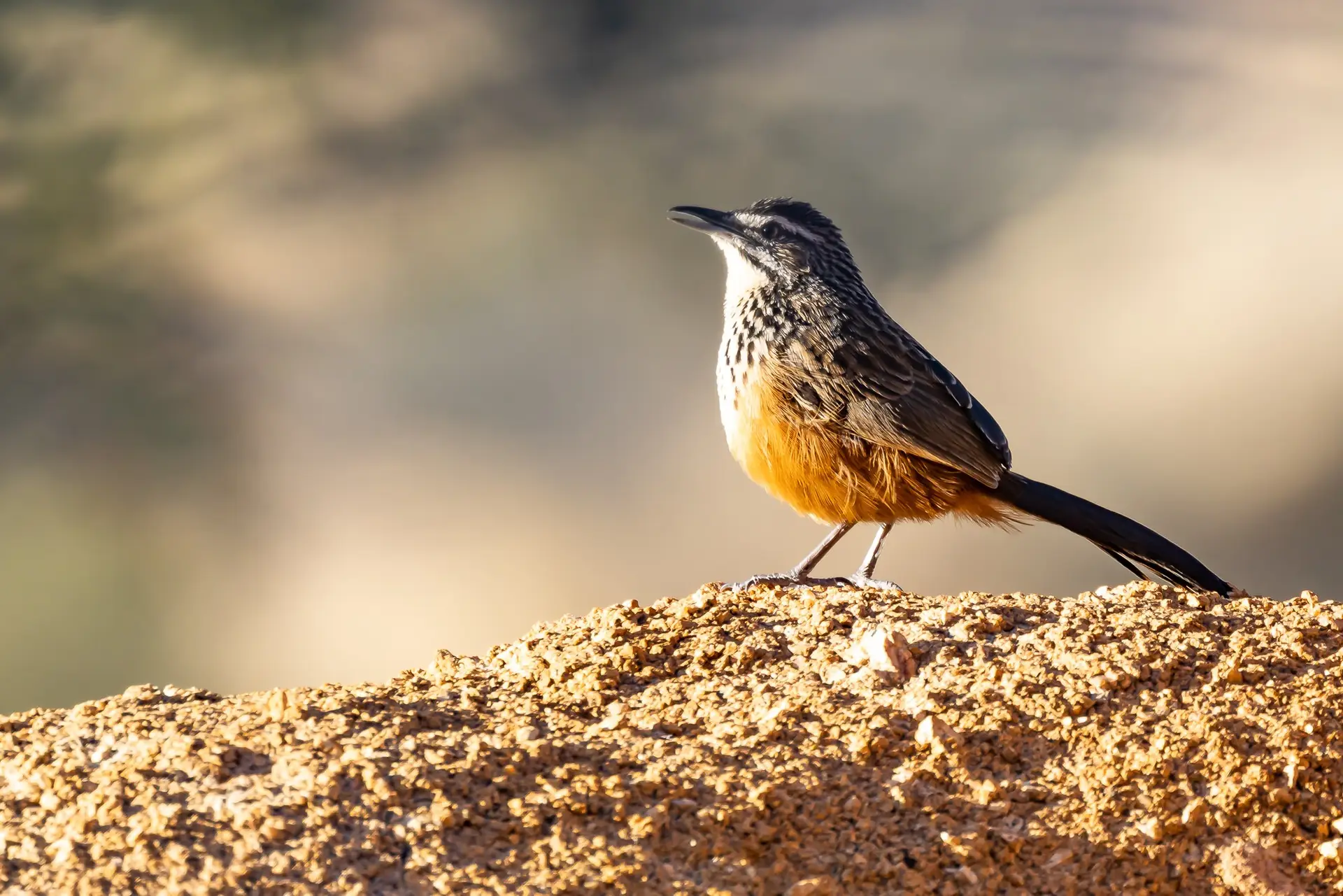
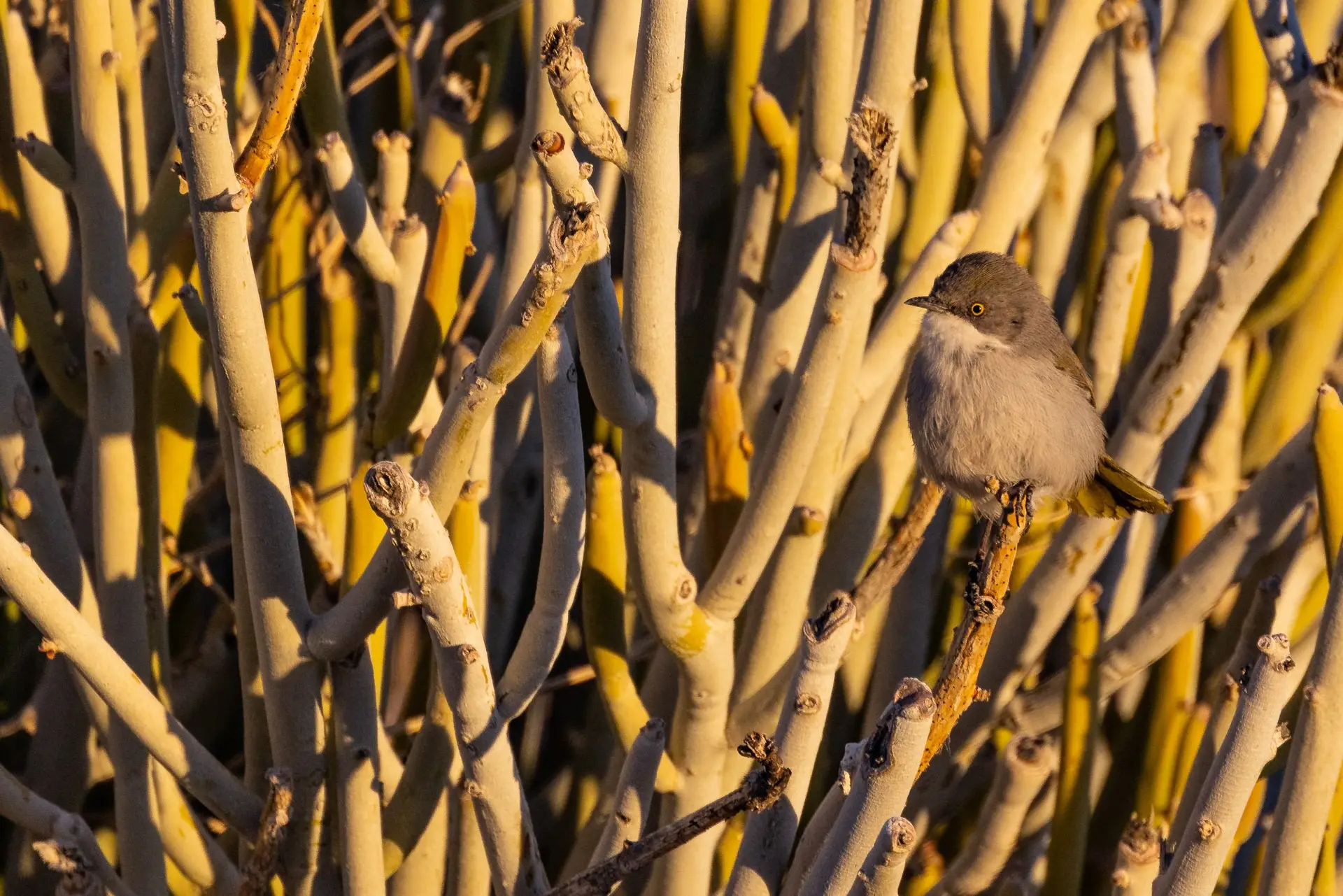
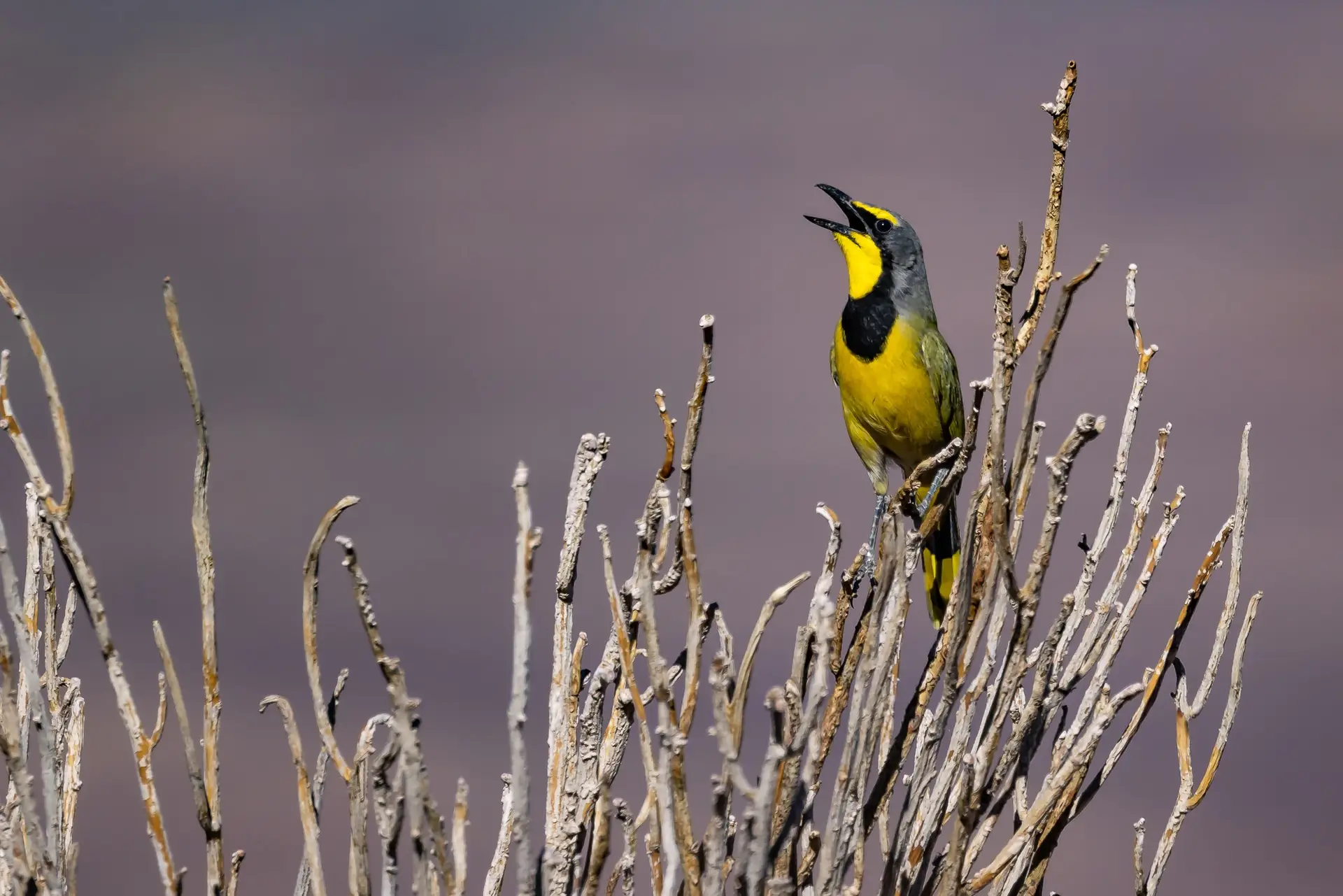
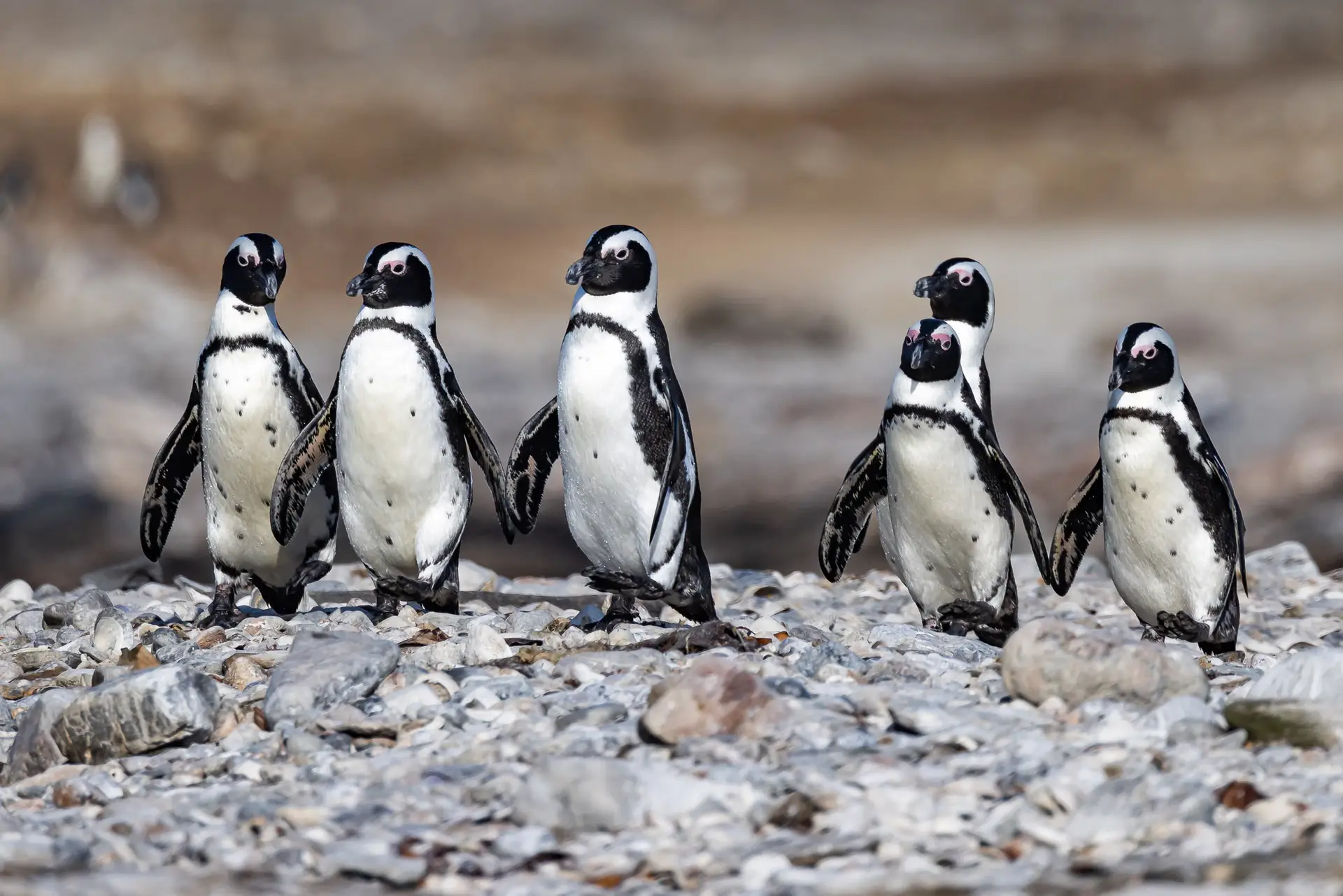
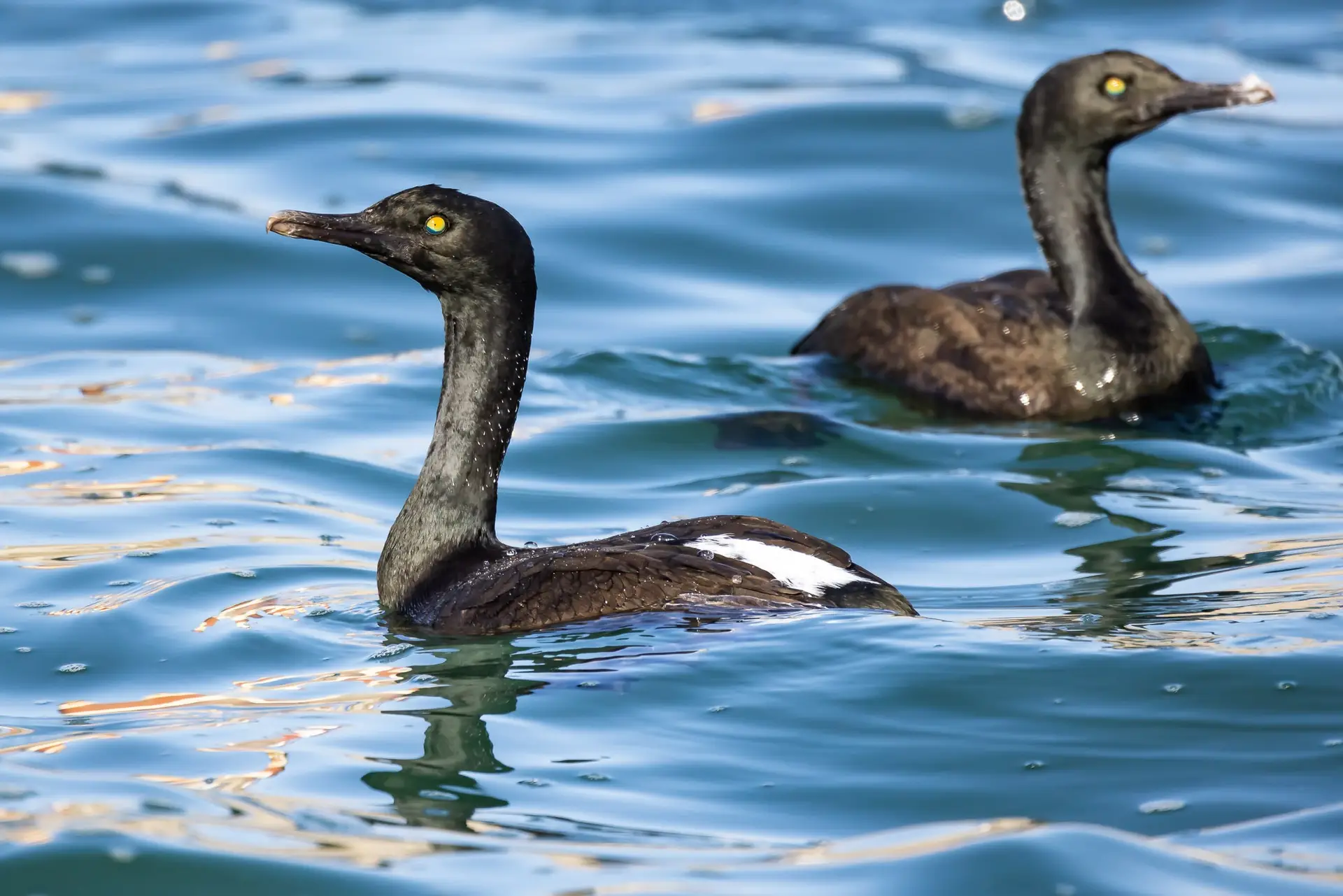
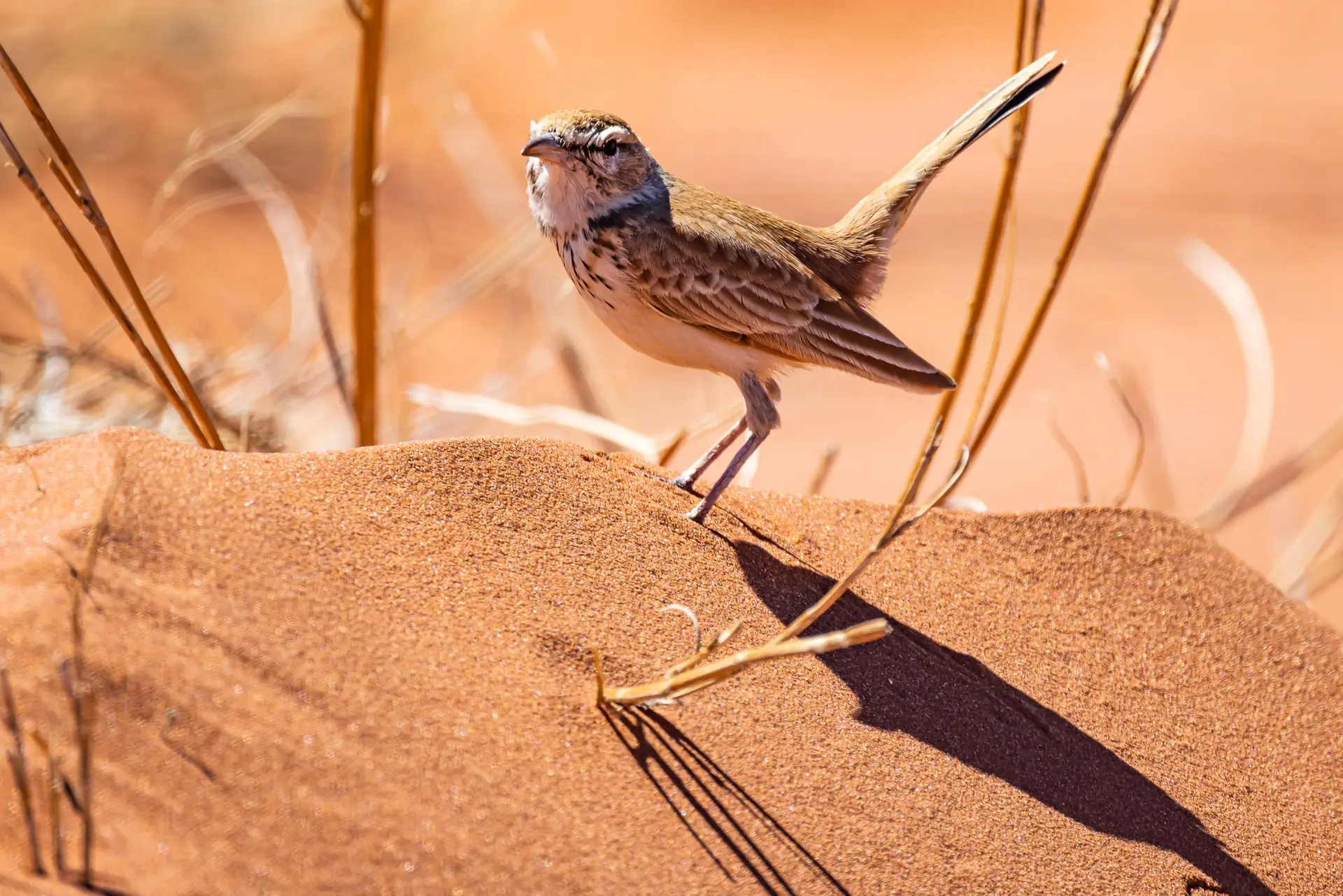
Don’t forget to pack your binoculars, wide-angle lens, zoom lens, and preferably a second camera when heading to Southern Namibia. This region invites you to open your eyes and appreciate the less obvious but equally captivating aspects of the landscape.
While larks take center stage, keep an eye out for agamas, rock shrikes, and eremomelas amidst the enchanting quiver tree forests. In the linear dunes, watch for snakes and the bustling colonies of Sociable Weavers during their mass breeding season. Deep in the Kalahari, you’ll find tiny Pygmy Falcons and whistling rats, with a chance to spot cheetahs and lions as well. Near the Orange River’s dramatic plunge into the depths, search for Namaqua and Cinnamon-breasted Warblers. Can you spot Sclater’s Lark amidst the rugged terrain?
Beyond observing the wild horses of the Namib, our goal is to discover at least two subspecies of Barlow’s Lark in the arid yet breathtaking desert landscape. We’ll also admire the majestic arched rock formation home to African Oystercatchers. During a boat tour, we’ll photograph African Penguins and become acquainted with Bank Cormorants.
The world’s tallest dunes at Sossusvlei are home to the Dune Lark, the true Namibian endemic species we seek. Naturally, we’ll also explore the gardens of the dune ant and witness the iconic desert sunrise.
Near the Welwitschia, a living fossil, we’ll search for the Karoo Eremomela and the Namaqua Chameleon. Swakopmund promises a bounty of wading birds, a wealth of history, leaping dolphins, and the possibility of encountering a moonfish or even a whale.
At Spitzkopje, amidst the awe-inspiring granite boulders, we aim to capture the elusive Herero Chat on camera. The entire area is simply breathtaking.
This journey is designed for those seeking a truly unique experience in the special deserts of Namibia, where you’ll capture images that cannot be replicated anywhere else in Africa.
All accommodations on this trip provide the essential comfort of upper-middle-class standards, featuring “en suite” bathrooms. Furthermore, their strategic locations are chosen to enhance your wildlife viewing experience and optimize route planning for the extensive driving distances in Namibia.
This location is ideal for spotting Black and African Cuckoos. Be sure to keep an eye out for the White-faced Scops Owl, Golden-tailed Woodpecker, and even the rare Bennett’s Woodpecker.
This nature-oriented trip begins with a swift departure from the capital, ensuring you immerse yourself in the wilderness at the earliest opportunity.
Our journey takes us into the heart of the Kalahari Desert, and along the way, we make regular stops to peer beneath the colossal nests of Sociable Weavers. With a touch of luck, we may even spot the elusive Cape cobra, a keen nest predator. Pygmy Falcons and Rosy-faced Lovebirds often choose these nests as their breeding grounds.
Beyond the breathtaking beauty of the Kalahari’s red dunes and valleys adorned with camel thorn trees, it’s the early morning nature walks that prove particularly rewarding. Here, we anticipate encounters with a variety of woodpeckers, cuckoos, and the photogenic Ant-eating Chat, offering ample opportunities for memorable wildlife photography.
Raptors love the Kalahari. Lots of Pygmy Falcon, Jackal Buzzard, Shikra and Snake Eagles.
Fawn-coloured Lark running on roads, Lappet-faced and White-backed Vultures breed in wintertime.
Birding amidst the dunes is a captivating experience. Look up, and you might spot White-backed Vultures perched on ancient camel thorn acacias, or catch a glimpse of Rosy-faced Lovebirds nesting in the intricate Sociable Weaver’s nests. And don’t be surprised if you encounter a tortoise or the ever-watchful Fawn-coloured Lark, often found right in the car lane.
Yet, the true allure lies in the diversity of wildlife that inhabits this terrain. It’s not uncommon to spot majestic black-maned lions, cheetahs, or even the elusive leopard against the backdrop of the red dunes. Antelope sightings are frequent, and the avifauna offers an array of predators, including snake eagles, Secretarybirds, and Pale Chanting Goshawks.
In the Kalahari, there’s always something waiting to be discovered, whether it’s a whistling rat darting through the dune sand or the enchanting world of night creatures. During our night game drive, we hope to introduce you to aardvarks, genet cats, and porcupines. Depending on the season, you might also be treated to the haunting calls of nightjars as part of your nocturnal birdwatching adventure.
Augrabies, known as “The Place of Noise,” takes its name from the Augrabies Falls. These falls were sculpted as the Orange River, marking the border between South Africa and Namibia, carved a deep 60-meter chasm through the rugged granite terrain, forming a grand cascade in the process. The thundering waters of the falls, accompanied by the calls of Hadeda Ibises, beckon exploration of this captivating location.
The spherical granite landscape is ever-changing and immensely impressive. Within the small green oases nestled against the bare granite, you’ll find Namaqua Warblers and various “bushbirds,” adding to the region’s allure. One can’t help but be captivated by the photogenic blue-red Augrabies Flat Lizard and the endearing gazes of the numerous Hyraxes basking on smooth rock surfaces.
On the steep slopes of the Augrabies Gorge, you might be fortunate to spot Verreaux’s Eagles and Jackal Buzzards soaring through the skies. And if you have a particular interest in photographing baboons, Augrabies is the perfect place to indulge in this endeavor.
This canyon, the second largest on Earth, boasts a stunning landscape adorned with beautiful shades of browns and reds. Here, you can embark on quests to spot the Karoo Long-billed Lark, search for the elusive Sclater’s Lark, listen for the unique call of the Karoo Korhaan, and, if you’re fortunate, catch a glimpse of the rare Karoo Eremomela against the backdrop of mesmerizing geological formations.
Amidst this rugged terrain, you’ll encounter deep red aloes, exquisitely toxic yet captivating spurges, marvelously concealed stone creepers, and enchanting light that never fails to fascinate our visitors. One young boy, when asked for directions to the canyon, aptly described it as a place where “something terrible must have happened to the earth many years ago.”
The Fish River Canyon is a true marvel, both in terms of its geological significance and its awe-inspiring scenery. Its striking rock formations, eroded valleys, and remarkable depth all contribute to its breathtaking allure.
As you explore, keep an eye out for the Grey Tit, an avian gem that may make a delightful appearance amidst this stunning backdrop.
In the seemingly barren and often harsh landscape of the south, the Orange River emerges as a lifeline, creating a linear oasis. Here, vibrant rock formations are adorned with various aloes and succulents, many of which burst into beautiful blooms. One particularly rare find is the “half-man,” the Pachypodium namaquanum. To admire this unique plant, a short climb is required, and the thrill of discovery is part of the adventure.
Along the banks of the Orange River, partially shaded by “Jacket Plums,” you can spot the Cape Robin-Chat and, with a stroke of luck, the Grey-backed Cisticola in the sparse mountain vegetation.
In addition to the familiar quiver trees, Aloidendron dichotomum and A. pilansii, the Aloidendron ramosissimum, often referred to as the “maiden quiver tree,” is an intriguing and highly photogenic presence in this region.
The origin of the wild horses in the Namib Desert remains a subject of debate. Reliable research points to a German-Boer origin during the tumultuous times of World War I. Regardless of their historical context, witnessing these wild horses in their natural freedom is a remarkable experience. Who knows, you may even capture the sought-after photo of battling stallions during your visit.
Bed and Breakfast
In the early morning, you’ll have the opportunity to capture the Cinnamon-breasted Warbler against a backdrop of red rocks, drawing you into the enchanting morning light.
Our first stop is at Haalenberg, where the striking Euphorbia dregeana marks the beginning of our “Barlow Stop” adventure in this captivating landscape. The Barlow’s Lark is divided into three distinct subspecies, each associated with diverse landscapes and intriguing destinations:
As we journey towards the Atlantic Ocean, the colonial history of the area becomes evident amidst the expansive and multicolored geological wonders. If conditions allow, we’ll search for the Black-headed Canary and the Barlow’s Lark amidst the dense growth of Euphorbia gummifera and degreana.
Our route also takes us through Kolmanskop, a location with a fascinating history. Mr. Kolman once attempted to reach the sea along this route, but the unforgiving landscape made orientation difficult for newcomers. Believing he was far from the coast, he resorted to shooting his thirsty oxen, only to discover that Lüderitz Bay was just a short walk behind the next hill. Kolmanskop later became a thriving diamond mining town and eventually transformed into a captivating ghost town—an experience well worth exploring.
As we continue our journey, the picturesque town of Lüderitz suddenly emerges amidst the rugged gneiss formations that have endured the relentless erosion by the Atlantic Ocean for millennia.
You’ll enjoy a comfortable two-night stay at Nomtsas Farm, situated within Leaflove Safari’s game reserve and conservancy. Here, you’ll find beautifully appointed guest rooms, each individually decorated and equipped with en-suite bathrooms. Please note that overnight stays at Nomtsas Farm are exclusively available to Leaflove Safari clients.
Did you know that the Namibian Bird Club just loves this place. Since no other tourists are allowed here, birding is completely individual without any pressure or disturbance. You wanna check these pans after the rain… hundreds and hundreds of birds!
The Fish River gracefully winds its way through the vibrant red sandstone and tranquil grey-green shale plains of our wilderness. Here on our farm, we’ve created 12 shallow reservoirs to provide sanctuaries for birdlife, and a network of “jeep tracks” guides you through the diverse habitats that make up our landscape.
Our farm is often referred to as a “lark’s paradise.” Throughout the year, you can easily spot various lark species, including the Karoo Long-billed Lark, Sabota Lark, Sclater’s Lark, Stark’s Lark, and several Sparrow-larks.
During the rainy season from January to March, our region experiences a remarkable influx of birdlife. We’ll be delighted to help you locate the sought-after Rufous-eared Warbler within the Water-thorn thickets. The lakes here are home to successful breeding populations of Greater Painted Snipes, and we’ll introduce you to hundreds of waders and waterfowl.
On the vast grasslands, you can observe various bustard species, alongside Double-banded, Temminck’s, and Burchell’s Coursers as they tirelessly hunt termites.
Our 20,000-hectare game reserve is complemented by an economically sustainable sector where nature-friendly cattle breeding is practiced. In addition to birdwatching, we aim to acquaint you with the giraffes and antelope species that call this area home. We’ll also share insights into how cattle farming can contribute to enhancing pasture fertility in the African context—an educational aspect of our experience.
The Dune Lark is not only the sole true endemic bird species of Namibia but also a captivating target for observation. Its captivating rust-red-brown-orange plumage is matched by the awe-inspiring landscapes it calls home, a visual treat for all nature enthusiasts.
Picture this: Red dune valleys blanketed in golden grass stretching as far as the eye can see…
A morning in the dunes bathed in gentle sunlight creates an unforgettable tableau. We’re delighted to introduce you to the diverse reptile species and the life-sustaining “Nara” plant! The Tsauchab Dry River’s course to the ocean has been blocked by shifting sand dunes, resulting in a clay soil depression known as “Sossusvlei.” Encircled by the world’s tallest dunes, reaching the summit is rewarded with a breathtaking panoramic view.
Our ecologically mindful game drives take you through these extraordinary dune valleys.
Don’t miss a visit to the Sesriem Canyon during your exploration.
or
We found a great spot to track down Karoo Eremomela, Benguela Long-billed Lark, Gray’s Lark and Rufous-eared Warbler amongst a few very rare plants and magnificent Geology.
The Namibian coast presents a rich array of diverse habitats for birdwatchers, provided you know how to navigate them effectively. We traverse the seemingly lifeless gravel plains of the Namib in search of the long-tailed Eremomela, Rufous-eared Warbler, and Gray’s Lark.
Who would have imagined encountering a plant almost as ancient as the Ginko biloba, first discovered by an Austrian named Welwitsch in 1859? Amid the dunes of Kuiseb, we set out to find the somewhat lighter-hued version of the endemic Dune Lark and Gray’s Lark, alongside the Trac Trac Chat. The Walvis Bay Lagoon offers a diverse array of wading birds, which can be enjoyed to the fullest during the summer months, from October to March. We are well-acquainted with the west side and secret paths that promise excellent sightings of the Damara Tern, various other terns, and of course, numerous sandpipers, ducks, and literally thousands of Flamingos.
In Swakopmund, you can savor a good coffee under the palm trees, photograph the Orange River White-eye, and explore well-stocked bookshops for ornithological literature.
The vast expanse of stunning geological formations and the sparsely vegetated pencil plants create a unique habitat for a small population of “Karoo Eremomela.” These landscapes contribute to the exceptional beauty that Namibia is renowned for!
While spotting the Herero Chat may be more challenging, the region it inhabits offers a breathtaking birding, geological, and photographic experience. The Spitzkopje, also known as Bushman’s Paradise, presents numerous opportunities for birdwatching. Klipspringers gracefully scale the rock faces, and the granite terrain is adorned with thick-stemmed “Elephant’s Foot” trees. Among our target bird species, in addition to the commonly seen Short-toed Rock-Thrush and Mountain Wheatear, are the schlegelii subspecies of the Karoo Chat, Layard’s Warbler, and the Black-backed Puffback with its striking red eye.
Between the imposing granite boulders, you’ll find intriguing succulents belonging to the vine, euphorbia, and dog poison families. Dotted amidst the landscape are various acacia species (now known as Vachellia and Senegalia due to renaming) and several grass species, creating an ideal habitat for a range of semi-desert birds.
Namibia’s breathtaking landscapes have a way of capturing the hearts of many visitors, and it’s no wonder that areas boasting semi-endemic bird, reptile, and plant species become a sought-after destination for naturalists, especially birders in search of the extraordinary.
Even before dusk settles in, we tune our ears to the calls of the hardy Hartlaub Francolin, capturing photographs of Rockrunners alongside Cape- and Cinnamon-breasted Buntings, the vocal Mountain Wheatear, and the Bokmakierie.
The seemingly inhospitable scrublands of the Namib Desert harbour the highly sought-after Herero Chat, and we’ll make every effort to track it down for you. Amongst the dense foliage of the “Resin Tree,” you may encounter the Layard’s Warbler, also known as the Tit-babbler, and with a bit of luck, you might even spot an Anthia cinctipennis.
On well-established trails tucked away in the remote corners of a private farm in the Erongo region, we’ve uncovered small bird paradises where we’d love to join you in seeking out some of the more elusive bird species.
no matter the weather…
We will ensure you reach the International Airport in a timely manner, and we sincerely hope that we have provided you with the birdwatching experiences and natural moments you desired, leaving you with lasting memories of our time together in nature.
| Participants per vehicle | per Person |
|---|---|
| 1 Person | 14'852.00 U$ |
| 2 Persons | 9'339.00 U$ |
| 3 Persons | 7'501.00 U$ |
| 4 Persons | 6'582.00 U$ |
| 5 Persons | 6'031.00 U$ |
| 6 Persons | 5'663.00 U$ |
| 7 Persons | 5'401.00 U$ |
| Single Room Supplement | 661.00 U$ |
After good rainfall, southern Namibia turns into a birdwatcher’s paradise. So we recommend this trip between the months of February to April.
Yes, please check that your passport is valid for at least 6 months after your return and that there are at least 4 free pages available.
Not only are deserts far more interesting geologically than vegetated areas, they offer a wealth of different plants, reptiles, mammals and birds, all of which tell a good story with their adaptability and make it worthwhile to visit their habitat.
This Safari was last updated on 25. July 2024 @ 14:13.
Avifauna Namib to Zambezi in November 2025, the guided birding tour with natural history specialities.
Namib, Etosha, Okavango, Chobe, Zambezi to Victoria Falls
Avifauna Namib to Zambezi in February 2025, the guided birding tour with natural history specialities.
Namib, Etosha, Okavango, Chobe, Zambezi to Victoria Falls
Warblers & Pachyderms, a Birding Safari with Natural History; Individual guided birding and nature photography tour from northern Namibia to Victoria Falls in the north-east.